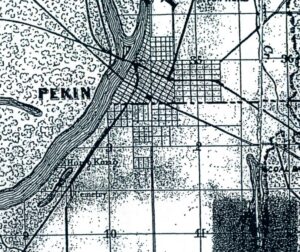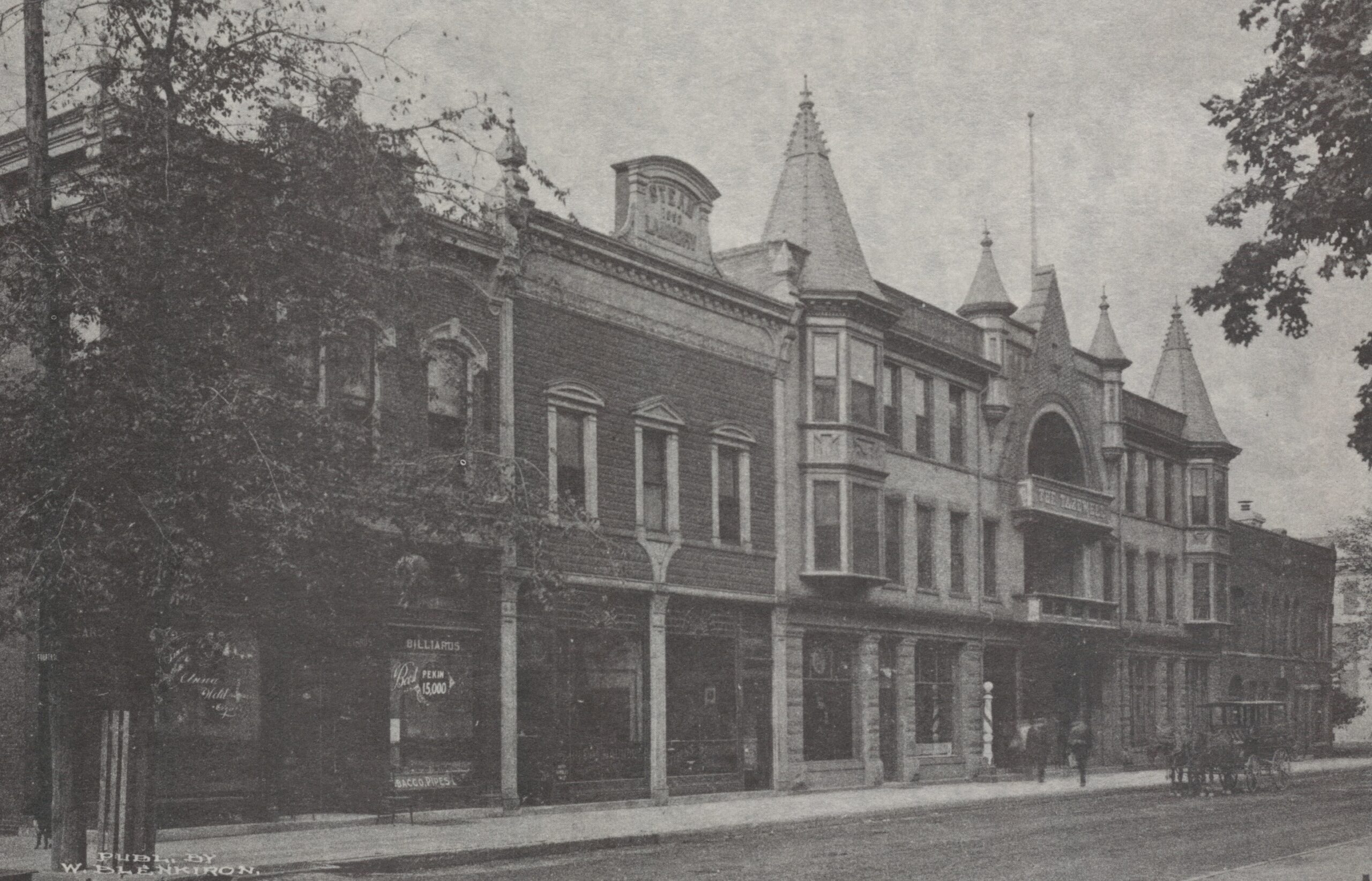Probably few Pekin residents have ever heard of the city’s little suburb of Hong Kong. In contrast, however, perhaps most Pekin residents have heard of the old tradition of how Pekin got its name. This week’s “From the Local History Room” will explain how those two topics are connected.
We explored the question of Pekin’s naming about four years ago in the column entitled, “How did Pekin get its name?” (Pekin Daily Times, Dec. 3, 2011, page C2), which included the following quote from late local historian Fred Soady’s 1960 paper, “In These Waste Places”:
“After the completion of the plat of the new town in 1830, Mrs. Nathan Cromwell, for reasons still obscure, gave the city the name of PEKIN . . . It is speculated, and a common legend in Pekin, that the city was so named by Mrs. Cromwell on the belief that the site was exactly opposite the site of Peking, capital of China.”
Pekin is not, of course, “exactly opposite” the site of Beijing (Peking), but is approximately opposite Beijing on approximately the same latitude – Pekin is at about 40 degrees North while Beijing is at about 39 degrees North. In the 1800s and even the early 1900s, “Pekin” was the usual “anglicized” spelling of Peking/Beijing.
The earliest writers on Tazewell County and Pekin history also indicate, with varying certitude, an association of the naming of Pekin with Peking, China. Thus, Charles C. Chapman’s 1879 “History of Tazewell County” says Mrs. Cromwell “gave to it the name of Pekin, we suppose after the celestial city of that name.” In his 1870 sketch of Pekin’s history, William H. Bates wrote that “we can only surmise that in the plenitude of her imagination she looked forward to the time when it would equal in size that other Pekin – the Chinese City of the Sun.”
The earliest historical reference associating Pekin with Peking is the 1860 diary of Pekin pioneer Jacob Tharp (father of Pekin’s first settler Jonathan Tharp), who wrote that the founders of Pekin in 1830 “were much exercised about the way in which to lay off the celestial city,” indicating that by 1860 – only three decades after Pekin’s founding – the city’s residents had already taken to associating their home town with its Chinese namesake.
It’s in the context of that old notional association of Pekin, Ill., with China that we should view a remarkable feature found on an early wall map of Tazewell County that was produced in 1857. David Perkins of the Tazewell County Genealogical & Historical Society, who has studied and indexed the county’s historical toponyms (place names), recently drew my attention to a particular place name on that map: “Hong Kong.”
The 1857 wall map places “Hong Kong” on the east bank of the Illinois River, due north of the old City Cemetery that once existed at the foot of Koch Street, and about two miles southwest of Pekin’s old downtown. The map displays a complete lack of a gridwork of city streets between Pekin and Hong Kong, which the map shows with nothing more than five or six streets.
This little “suburb” of Pekin is shrouded in mystery. As far as we can tell, no plat map of Hong Kong, Ill., was filed with the Tazewell County Recorder of Deeds, or at least no such plat has survived. The only evidence of this Hong Kong’s existence is this 1857 map. The 1864 M. H. Thompson map of Tazewell County shows no trace of Hong Kong, displaying instead a single road (today South Front Street) and a single building (presumably some kind of factory or distillery or industrial business), nor does little Hong Kong appear on any other early maps or in any other atlases and historical documents. That area has long been Pekin’s industrial district, and Praxair Inc. now occupies a spot at or near the land formerly called Hong Kong.
According to Perkins, despite what the 1857 map says, Hong Kong may never have really existed. It’s possible that a land speculator platted out Hong Kong as a proposed town and tried unsuccessfully to attract settlers and businesses. The little settlement may have existed for a very short time, having a very small population, or perhaps Hong Kong never had a single inhabitant. It may have been nothing more than a name on a map.
The significance of the name, however, may be readily seen. Because Pekin bore a name with Chinese overtones, someone apparently thought it only fitting that there should be another town in the vicinity named for Hong Kong. We may not be able to learn anything definite about Tazewell County’s Hong Kong, but we at least can see that this mysterious name from 1857 – three years before Tharp’s diary – is an additional bit of evidence that the association of Pekin with China goes back to the days of Pekin’s pioneers.

The little settlement of “Hong Kong” is shown in this detail of an 1857 wall map of Tazewell County. The map was formerly displayed in the Kuhfuss & Kuhfuss law offices in downtown Pekin. IMAGE COURTESY OF THE TAZEWELL COUNTY GENEALOGICAL & HISTORICAL SOCIETY










